
Summary: Two Alliances of three robots each. Robots score points by scoreing boulders in the tower goals, damageing defenses, and capturing the tower.

Summary: Two Alliances of three robots each. Robots score points by stacking totes on scoring platforms, capping those stacks with recycling containers, and properly disposing of pool noodles, representing litter.

Summary: Alliances of 3 robots score points by moving balls about the size of an exercise ball through 3 color-coded zones and scoring into either high or low goals on the opposing alliance's wall. Bonus points are scored through assists, where a robot passes the ball to an alliance partner in a diferent zone, or by tossing the ball over a high truss in the center of the field to an alliance partner, who catches it.

Summary: Alliances of 3 robots score points by shooting Frisbees into either slots of various sizes mounted into the opponent's wall at various heights or onto a goal mounted on top of a pyramid near the alliance's wall. The higher and smaller the goal, the more points earned per frisbee. During endgame, robots may climb the pyramid to gain bonus points based on how high they climbed

Summary: Rebound Rumble is a modified form of basketball in which teams score points by shooting small foam basketballs into one of four hoops of varying height. The higher the basket, the more points it’s worth. In the end game alliances can score extra points by balancing on teeter totters. Points earned on from balancing scale depending on the number of robots that successfully balance.

Summary: In Logomotion, teams score points by hanging inflated pool tubes on hooks arranged as a grid on the driver station walls. A score multiplier is awarded if the tubes are arranged into a FIRST logo; a triangle, circle and square in that order. Teams can win bonus points by deploying minibots that must climb one of 4 vertical poles. The minibot climb is a race thus points are awarded based on your position.

Summary: Breakaway is a modified version of soccer; robots score points by shooting balls into one of four goals on the field. The field is divided into three sections by two large trapezoidal bumps, creating a large obstacle for robots to traverse. To score points in the end game, teams can climb one of two vertical towers on the field. If they are able to lift themselves high enough, bonus points are awarded.

Summary: Teams of three robots play on a super-low friction surface with low friction wheels in order to simulate moon gravity. Teams score points by collecting “moon rocks” (called orbit balls by retailers) and dumping them into trailers being towed by the opposing alliance for 3 points. There were also “empty cells” that could be charged into “super cells” at human player stations for 15 points.

Summary: Alliances of three robots each race around a NASCAR-like track in order to earn points. For bonus points, teams can carry large 50 inch trackballs around the track then throw them over an overpass that bisects the track. Additional bonus points were awarded if the trackball were placed on top of the overpass at the end of the match.

Summary: In Rack 'n Roll, teams of 3 robots score by hanging pool tubes from 'The Rack', three levels of hanging metal bars, with each level having 8 arms evenly spaced in an octagonal manner. Each row or column of tubes doubles a team's score. There were 2 special types of rings: Keepers, Ringers, and Spoilers. Keeper rings, hung in autonomous, gave a team permanent claim to a peg. Spoilers negated all rings on a peg.
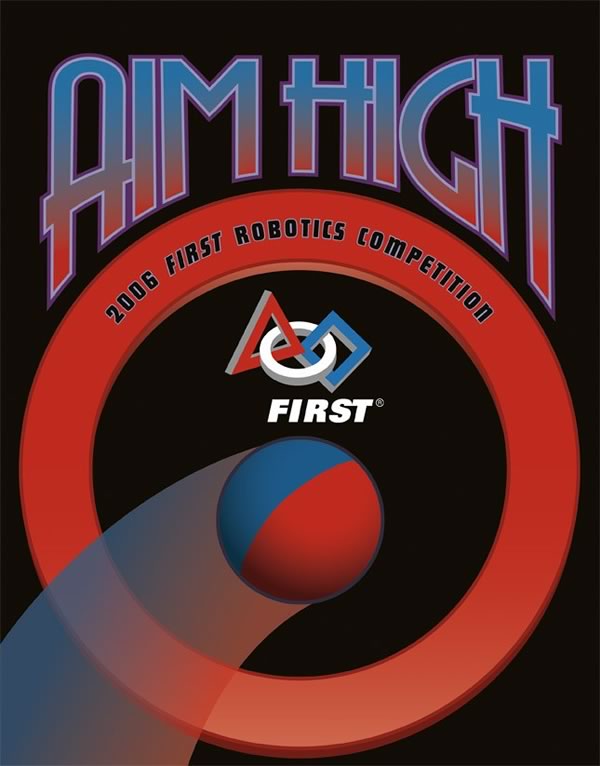
Summary: In Aim High, teams shot balls into either high goals or low goals to score. The team who scores the most points in the autonomous round receives 10 points and first chance to score. Alliances alternate between scoring and defending, until the 4th round, where either team can score. At the end of the game, teams may score points by driving their robots onto a platform.
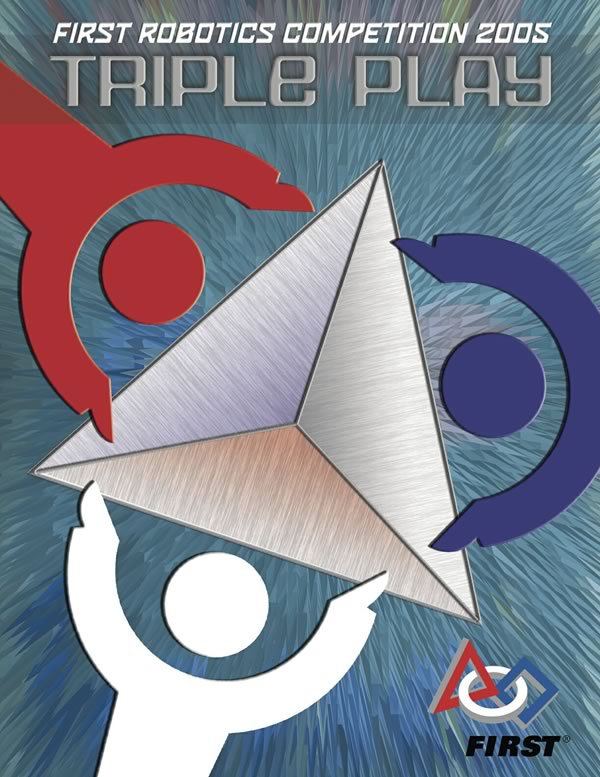
Summary: Alliances of 3 robots scored pints by scoring "Tetras", tetrahedra made of PVC pipe, on or in one of the 9 goals placed throughout the field. Placing the Tetras in a row earns a team bonus points. At the end of the game, parking robots behind a line will also give a team bonus points.

Summary: The red and blue alliances would score points in this game by placing balls within mobile goals or non mobile goals, located in the middle of the field. Both human player and robots were allowed to place balls within the goals. At the end of the game, bonus points could be scored by hanging robots on a raised bar located in the middle of the playing field
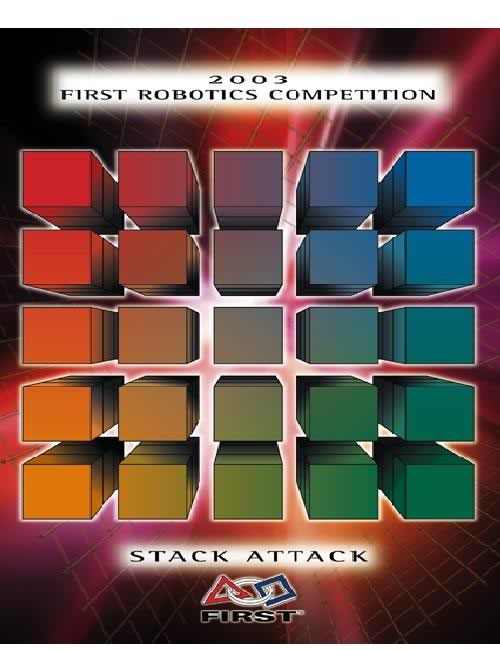
Summary: The game for the 2003 season requires robots to collect and stack plastic storage containers on their side of the playing field. The location of the robots and containers and the height of the stacks at the end of the match determine each team’s score for the round.

Summary: Each 2 minute match begins with the 24’ x 48’ field broken up into 5 zones and set up as follows. Four robots start on the playing field and are paired in alliances of 2. There are 2 robots at diagonally opposite corners, 10 soccer balls in each driver station area, 20 soccer balls centered along each side of the field, and 3 moveable goals weighing approximately 130 lbs each in the center zone. The strategies are endless, but the basic objectives are simple. Robots race around the playing field trying to gather balls, place them into goals, place the goals in their scoring zone, and return their robot to their starting zone before the 2 minutes have elapsed.
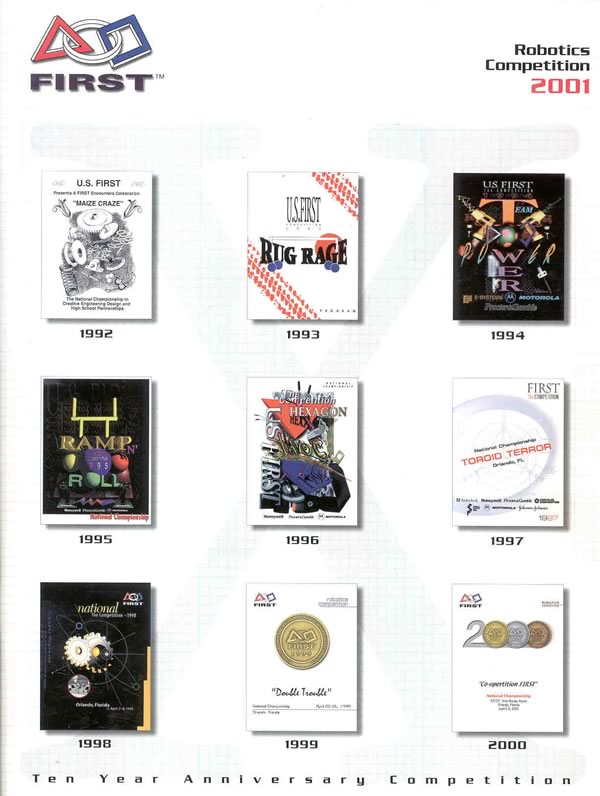
Summary: Four teams work together as one alliance to try to achieve as high a score as possible in each match. Points are scored by placing balls in their goal, and by positioning their robots and goals in designated areas at the end of each match. At the start of each match, the alliance station contains twenty small balls. In addition there are twenty small balls and four large balls on the far side of the field which may be used to score points.
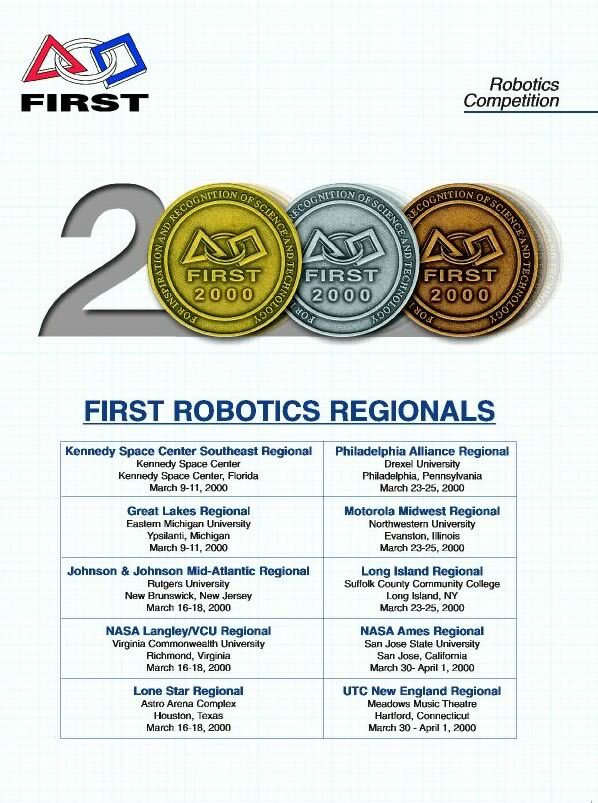
Summary: Four teams, paired in two alliances, will compete in each match. An alliance scores points by placing balls in their goal, and by positioning their robots in designated areas at the end of each match. At the start of a match each alliance has seven yellow balls and one black ball in their station. In addition, there are fifteen yellow balls and two black balls on the far side of the field which may be scored by either alliance.

Summary: Points are scored by positioning “floppies,” robots, and the “puck” on the playing field. Floppies are light weight, pillow-like objects with Velcro-loop material located in the center and around the perimeter. Each alliance has ten color coded floppies located on the playing field and at the player stations.
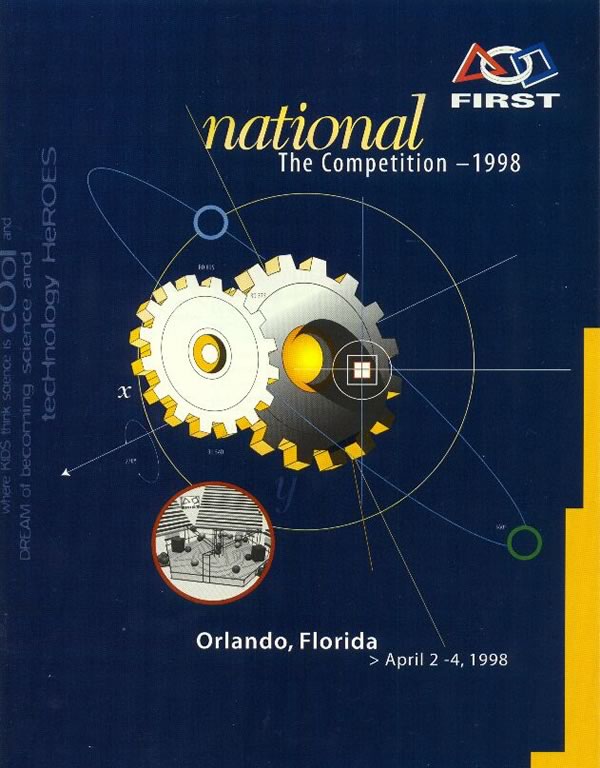
Summary: In two minutes matches, the three robots and human players score points by placing the balls onto the side goals or into the central goal. The balls are color-coded to identify team ownership. A human player, located outside the perimeter of the field, is allowed to hand balls to the robot or throw balls directly at the goals.
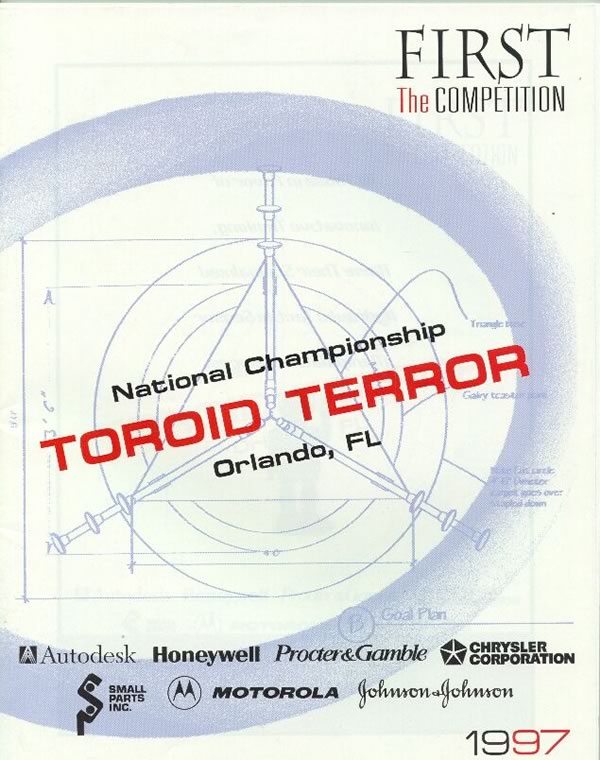
Summary: In two minute matches, the three robots and human players score points by placing the inner tubes onto pegs in the goal, or around the top of the goal. The tubes are color coded to identify team ownership. Human players are not allowed onto the field, but they may hand tubes to the robots or throw tubes directly onto the goal.
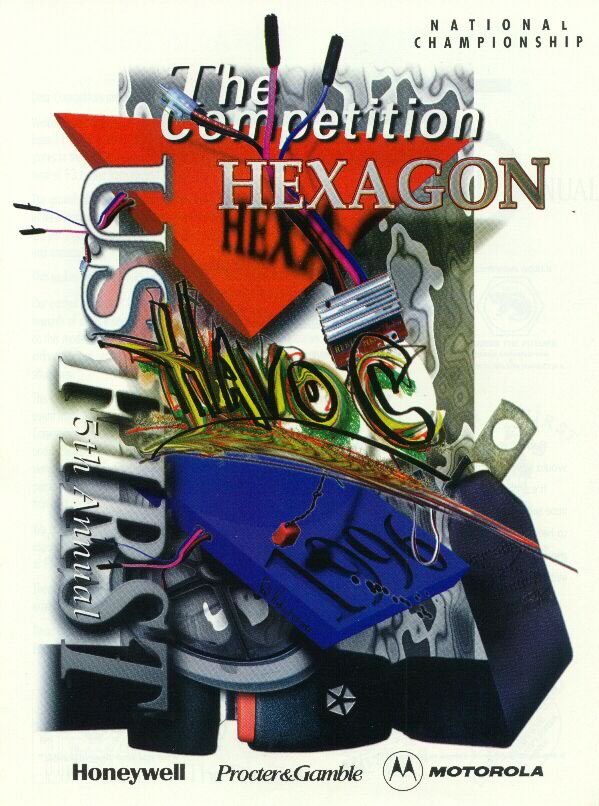
Summary: In two minute matches, the three robots, with their human partners, score points by placing the balls in the central goal. The balls may be carried, pushed or thrown into the goal by the robots. The human players are not allowed on the playing field as they are seat-belted down at their stations, but they may score points by throwing ball(s) into the central goal. Points are awarded for balls located in the central goal at the conclusion of each two minute match.
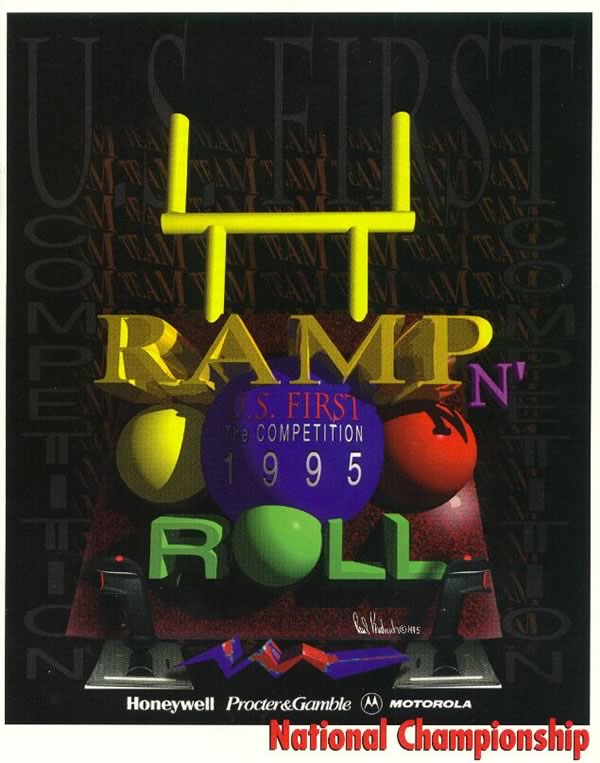
In two minute matches, three robots race down a 30-foot raceway, over a speed bump just wide enough for two to pass through, to retrieve their 24” and 30” vinyl balls. To score, they must carry the ball(s) back up the raceway and push or shoot the ball over a nine-foot field goal from either the playing floor or a raised platform area, all the while trying to keep their opponents from scoring. Teams may score more than once with each ball – the smaller ball is worth two points and the larger ball is worth three points.